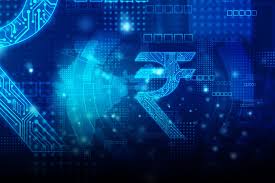The Digital Revolution Transforming How We Live and Work

India’s digital revolution, often dubbed ‘Digital India,’ has become one of the country’s most transformative movements in recent years. By 2025, this sweeping digital transformation is no longer a promise for the future but an everyday reality that’s changing how millions of Indians live, work, and interact with their government and economy.
The foundation laid by initiatives like Aadhaar, UPI (Unified Payments Interface), and the BharatNet project has helped democratize access to digital services. Today, rural and urban India alike are connected through smartphones and the internet, making banking, government services, and education more accessible than ever before.
One of the most visible impacts of this digital wave is in financial inclusion. Millions who once had no formal banking access are now part of the formal economy, able to send money, receive subsidies, and start small businesses through mobile platforms. This connectivity is empowering entrepreneurs in tier-2 and tier-3 cities and opening new economic opportunities previously unimaginable.
In healthcare, telemedicine and digital health records are bridging the urban-rural divide. Patients in remote areas can consult specialists thousands of kilometers away via video calls, reducing the need for costly travel and enabling early diagnosis. Digital platforms also support government vaccination drives and health awareness campaigns more efficiently.
Education has also benefited from digital penetration. E-learning platforms, online certification courses, and government digital classrooms are providing flexible learning opportunities to students, especially in underserved regions. While challenges remain, this digital push is creating a more level playing field for the country’s youth.
Governance is becoming more transparent and citizen-friendly. Digital portals allow people to access documents, pay taxes, and report grievances without multiple visits to government offices. The speed and efficiency of public services have improved, fostering trust and accountability.
E-commerce and the gig economy have exploded thanks to digital connectivity. Small traders can reach national and global markets, while millions of freelancers and delivery workers find new income streams. This democratization of commerce is reshaping consumer behavior and employment patterns alike.
However, the digital revolution also brings new responsibilities. Data privacy, cybersecurity, and digital literacy are crucial challenges that India must navigate carefully. Empowering citizens to use technology safely and effectively will be vital in ensuring that digital growth is inclusive and sustainable.
As India moves further into 2025, the digital transformation isn’t just about technology—it’s about empowerment, opportunity, and inclusion. It’s a revolution that’s quietly but profoundly reshaping the fabric of society and promising a future where technology bridges gaps rather than deepening divides.